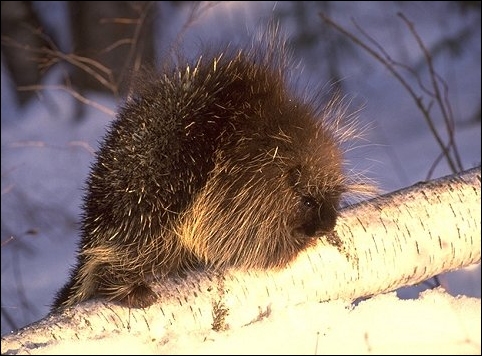

Immigration is nothing new to the Southwest. Now, I don't mean just the original arrival of those people who in historic times have been come to be recognized as American Indians, nor even the Europeans and their descendants who flooded into the land in more recent centuries. I'm talking much older than those events. In fact, some millions of years ago, back in the Pliocene, when South America finally joined up with North America by means of that land bridge we call Central America.
With a dry-land route available, the migrants were off and running. Not
all traffic was south to north, of course, but that's another story. The South
Americans included a variety of large ground sloths; the massive, vaguely
armadillo-like glyptodont; a large rodent closely related to the living capybara; and a
bristly critter known as the porcupine. Now apparently there is something to be said
about being prickly and perhaps a bit grumpy. After all, of all the critters named,
only the porcupine is still around, and doing quite nicely, thank you.

Listen to the Audio (mp3 format) as recorded by KTEP, Public Radio for the Southwest.
Contributor: Arthur H. Harris, Laboratory for Environmental Biology, Centennial Museum, University of Texas at El Paso.
Desert Diary is a joint production of the Centennial Museum and KTEP National Public Radio at the University of Texas at El Paso.

Erethizon dorsatum, American Porcupine. Photographers: Gerald and Buff Corsi. Kalispell, MT. Copyright © 1999 California Academy of Sciences.
Stehli, F. G., and S. D. Webb, eds. 1985. The Great American Biotic Interchange. Plenum Press, New York. 536 pp.